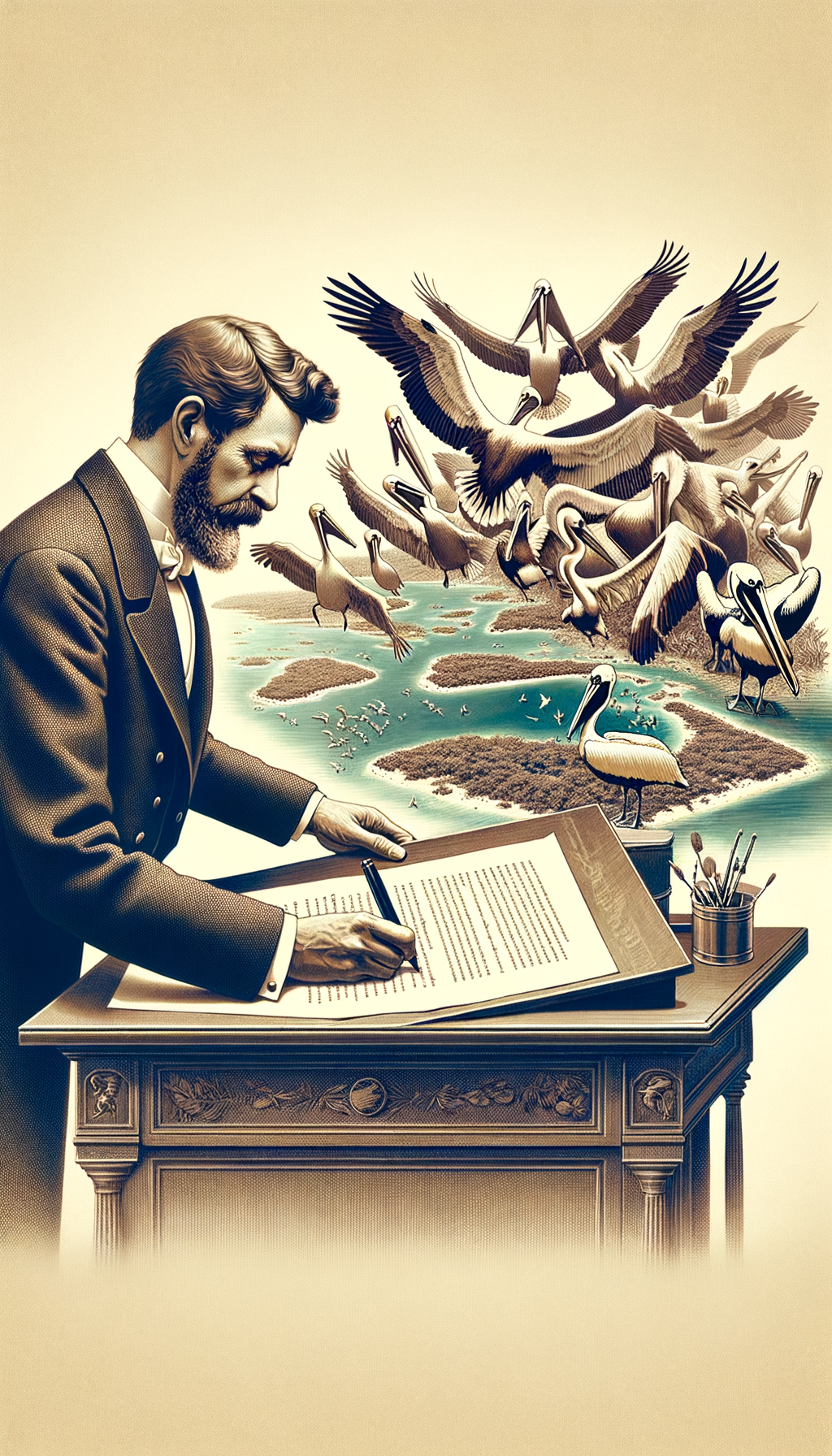United States – A Sanctuary is Born: The Birth of the National Wildlife Refuge System, 1903
TLDR;
- Event: On March 14, 1903, President Theodore Roosevelt established Pelican Island, Florida, as the first National Wildlife Refuge to protect its bird population from the fashion industry’s demand for feathers and unregulated hunting.
- Significance: This act marked the beginning of the National Wildlife Refuge System, aimed at creating protected areas for wildlife across the United States.
- Impact: The refuge system grew to over 560 refuges, becoming a cornerstone of American environmental policy and habitat conservation.
- Legacy: Roosevelt’s vision and leadership inspired a national conservation movement, leaving a lasting impact on wildlife protection and environmental stewardship.
–
Story
The air was thick with the cries of pelicans as President Theodore Roosevelt made a pivotal decision regarding Pelican Island, Florida. It was March 14, 1903, and with a stroke of his pen, Roosevelt was about to change the course of American conservation forever. This small island, teeming with life, would become the first National Wildlife Refuge, a sanctuary for birds and a beacon of hope for the future of wildlife protection.

At the turn of the 20th century, America was a land of vast wilderness, but its wildlife was under siege. The fashion industry’s insatiable demand for feathers had decimated bird populations, and unregulated hunting threatened countless species. Roosevelt, a passionate naturalist, recognized the urgent need for action. His vision was clear: to create a network of protected areas where wildlife could thrive, free from human exploitation.
The establishment of Pelican Island as a refuge was a bold and unprecedented move. It was a declaration that the preservation of nature was a national priority. This small act of protection was the seed from which the National Wildlife Refuge System would grow, eventually encompassing over 560 refuges across the United States.
The turning point came with Roosevelt’s unwavering commitment to conservation. His leadership inspired a movement, rallying the nation to the cause of protecting its natural heritage. The refuge system became a cornerstone of American environmental policy, safeguarding habitats for future generations.
Today, the legacy of that decision regarding Pelican Island endures, reminding us of the power of vision and action in the face of environmental challenges. The National Wildlife Refuge System stands as a testament to the enduring impact of Roosevelt’s foresight and dedication.
–
| Would a different approach to conservation have changed the fate of America’s wildlife? |